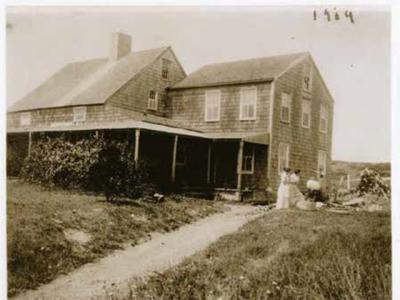Amagansett Farm Field Dust Kicks up Furor
Amagansett Farm Field Dust Kicks up Furor

"Citizens Advisory Meeting Regarding the Dust," reads the flier announcing the meeting on Monday at 6:30 p.m. at the Amagansett Firehouse, and for anyone who works, lives, or shops on Amagansett's Main Street, it's no surprise that people are frustrated and ready to talk about it.
Twice last week, the dust blowing off the dry farm field just north of Main Street created thick clouds of particulate that swirled over the hamlet, coating parked cars and sidewalks, finding its way through invisible cracks to settle on bottles at Amagansett Wine and Spirits, the pots and pans in the kitchen at Organic Krush, the bookshelves at the Amagansett Library.
"I feel it in my lungs, I feel it on my skin. You can taste it," Michael Cinque, the owner of Amagansett Wine and Spirits, said Monday morning. "It's the finest dust; it goes through the finest cracks. Every bottle in the store is dusty."
On Monday, three days after the most recent dust storm, sidewalks and stoops on Main Street were still covered in a thick layer of fine golden dust. On the south side of the street it lay in piles almost to the top of the curb. In the public parking lot behind the Main Street businesses a gentle breeze blew eddies of dust off the barren field.
Without an apparent cover crop, there was nothing to hold the silty top layer of soil in place.
"It's happened three times in a 10-day span," said Michelle Walrath, an owner of Organic Krush, a Main Street takeout shop. Her shop has been covered "from front to back and from top to bottom." Not only does the cleanup take "hours and hours and hours of extra work for the staff" and affect inventory, but it's also "not a healthy situation for the employees," she said.
While inventory is an issue, "I'm more worried about our lungs," said Craig Wright, the owner of Innersleeve Records on Main Street.
"Who knows what's in that silt," Mr. Cinque said.
"This is not a new issue," said Mr. Cinque, who has run his Main Street shop for 40 years and says the field north of Main Street has been without a cover crop for the past six or seven years. "I've met with the [Suffolk County] Farm Bureau, the [town] agriculture committee."
"We've called the town over and over and over again," Ms. Walrath said. "We've sent photos and emails."
"It's beyond aggravating," Mr. Wright said.
The land is owned by the Bistrian family and is leased by a farmer. While the family has long been interested in selling the land to the town for preservation, and the town has long been interested in buying development rights, the two parties have failed to reach an agreement on a purchase price.
East Hampton Town Councilman David Lys, the liaison to the Amagansett Citizens Advisory Committee, said Monday that as an Amagansett business owner himself he is "acutely aware" of the issue. As frustrating as it may be, there is little the town can do, given its regulations. Agriculture and markets laws regulate "crop cover . . . as a best practice management only," Mr. Lys said. In East Hampton, "There is no town legislation that requires crop cover." It is, however, regulated in Southampton Town, something East Hampton's agricultural advisory committee will now consider, Mr. Lys said.
"I wish they'd just find a solution," Mr. Cinque said. "There really should be a fund to help the people of Main Street clean up from this."
The dust is just one of many items on the Amagansett committee's agenda tonight, but given how frustrated residents, business owners, and employees are, it is likely to dominate the discussion.






